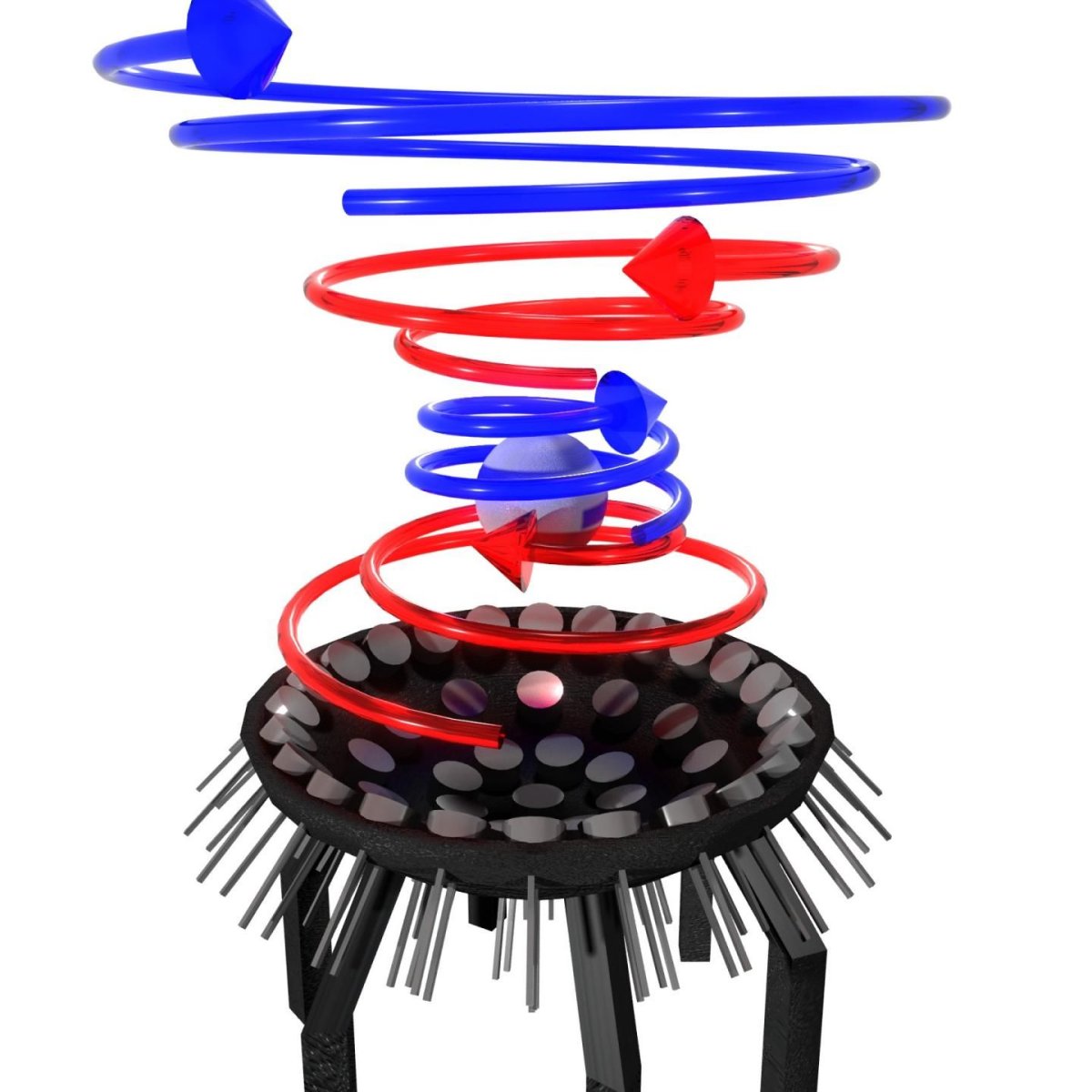
For the first time, physicists have discovered a way to levitate large objects—as in, human-sized objects—with an acoustic tractor beam.
Acoustic tractor beams work by using sonic power to capture particles and suspend them in mid-air, according to a press release from the University of Bristol. This gives them an edge over devices that use magnetic levitation, which can struggle to grab small or otherwise tricky objects like liquids. But they've only been able to capture small objects, according to CNET; never anything larger than the wavelength of the sound.
Researchers from the University of Bristol became the first to overcome that size limitation, paving the way for levitating humans. They created a system of rapidly fluctuating acoustic vortices—basically, tiny sound tornadoes, with a "twister" of loud sound surrounding an inner, and completely silent, core, according to the press release. A paper describing the research was published in the journal Physical Letters Review.
"In the future, with more acoustic power it will be possible to hold even larger objects," Mihai Caleap, the Senior Research Associate who developed the simulations, said in the press release. "This was only thought to be possible using lower pitches making the experiment audible and dangerous for humans."
Think about something like rowing a canoe—if you paddle on just one side, you'll go in circles. But if you paddle quickly and evenly on both sides, you'll go straight, since the opposing forces balance each other out.
When a sound field rotates in any direction, some of its spin carries over to affect the motion of the levitating object inside it, making such an object orbit faster and faster until it becomes out of control and the experiment fails. But by switching the direction of the spin back and forth at high speeds, balancing it through opposing forces, the researchers found the sound tornado it could hold an object stable. This let them make the tornado's silent core even bigger, ultimately trapping a sphere just under an inch across. It's the largest object ever stabilized by a tractor beam.
The sphere is obviously a lot smaller than a human, but what it proved for the first time is that it's physically possible for a tractor beam to hold objects larger than the wavelengths themselves, according to the Huffington Post.
"Acoustic researchers had been frustrated by the size limit for years, so it's satisfying to find a way to overcome it," lead author Asier Marzo, a researcher from the University of Bristol's Department of Mechanical Engineering, said in the press release. "I think it opens the door to many new applications."

The practical applications the researchers believe their work will facilitate include contactless production lines, wherein extremely fragile objectscan be manufactured without ever needing to touch them. It also could improve the risk factors for dicey surgical operations where microscopic devices need to be implanted into the patient's body.
A different group of researchers recently created a way to build real-life cloaking technology; fingers crossed that the next Star Trek-predicted breakthrough has to do with reversing global warming.
Uncommon Knowledge
Newsweek is committed to challenging conventional wisdom and finding connections in the search for common ground.
Newsweek is committed to challenging conventional wisdom and finding connections in the search for common ground.
About the writer
Kastalia Medrano is a Manhattan-based journalist whose writing has appeared at outlets like Pacific Standard, VICE, National Geographic, the Paris Review Daily, ... Read more
To read how Newsweek uses AI as a newsroom tool, Click here.








